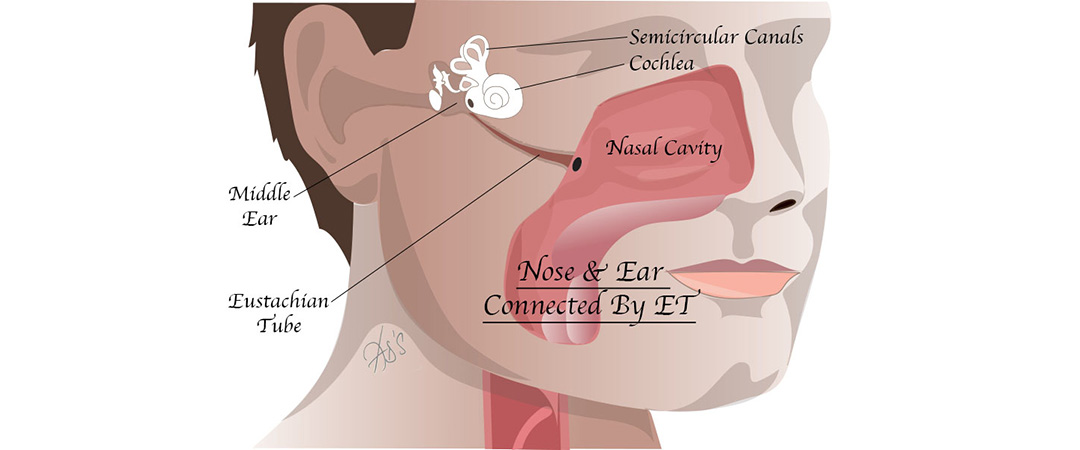

Glue ear is collection of glue like fluid in the middle ear, which replaces the air that normally fills the middle ear (between the ear drum and inner ear). This fluid reduces the sound that passes into the inner ear.
This leads to partial deafness, which in children often affects speech and language development, attention deficit, occasional imbalance as well as pain.
Glue ear is one of the most common childhood illnesses. Children under the age of five are the largest group affected, although it can occur in all age groups.
The basic cause of glue ear is blockage of eustachian tube (a channel connecting the back of the nose to the middle ear), leading to poor ventilation of middle ear, resulting in fluid build up which gets thicker as it fills the middle ear.
There are many different things that can contribute to glue ear. These include:
Most glue ears resolve spontaneously over a period of few weeks to three months.
Autoinflation: This refers to blowing into a special balloon through the nose. This helps to unblock the eustachian tube thus clear fluid in the ear and improve hearing. This should be done regularly for few, for it to work. Young children often find it difficult to do Autoinflation
Use of nose drops and low dose antibiotics is often used, but evidence for this working is not robust.
Hearing aids may be used to treat the poor hearing and speech problems that are caused by glue ear. This would obviate the need for an operation and is an option for those in whom a general anaesthetic is a significant risk
If glue ear does not resolve in 3 months, surgical procedure of grommet insertion is indicated. This will involve a short general anaesthetic, often removal of adenoids and insertion of grommets.
Glue ear can occasionally develop in adults, often following a head cold. Diagnosis and treatment remains similar to that of children. If symptoms show no signs of improving after about three months, grommets may be inserted after draining fluid from the middle ear. Grommet insertion in adults may be carried out under a local anaesthetic, although this can be painful.
Please click HERE for more information on the ENTUK website
PRACTICE MANAGER: Chelsea Fulton 07534 771264 MEDICAL SECRETARY: Karen Harris 07453 881588
CORRESPONDENCE ADDRESS: Enso House Crayfields Business Park, 3 New Mill Road, Orpington BR5 3TW